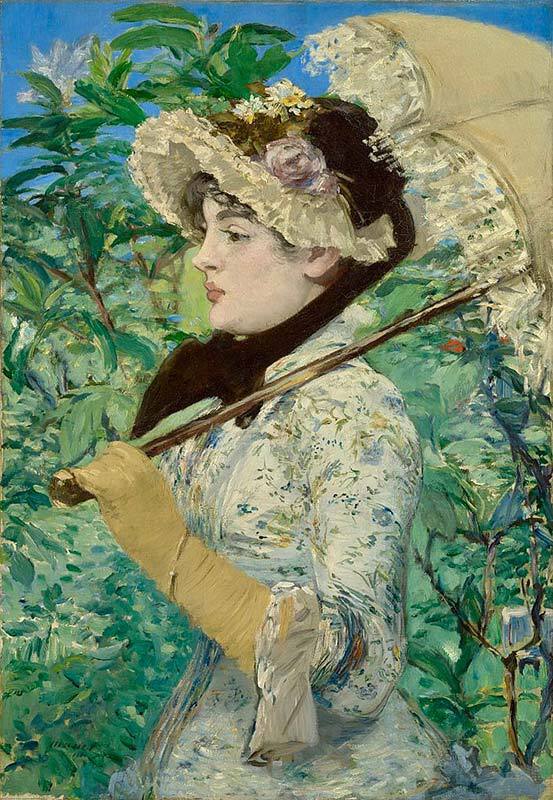1. Chronology
Early life
23 January 1832: Manet is born in Paris. His father is a senior civil servant, who later became a judge. His mother is the goddaughter of the Crown Prince of Sweden. The Manet family had money, which was important in Manet's later life: he (unlike his near-contemporary Claude Monet) did not need to worry about selling paintings to be able to eat.
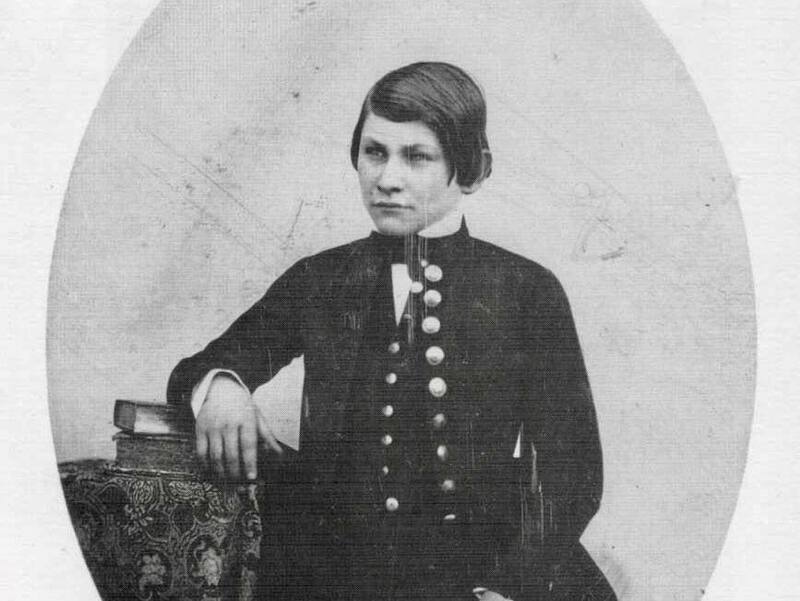
1841: Manet enrols at the College Rollin, but does not excel in anything except physical education and art. Manet's father wants his son to follow him into the law; but Manet has other ideas and the two argue. Manet's artistic instincts are nurtured by his maternal uncle, Edmond Fournier, who took Manet and his best friend Antonin Proust to the Louvre.
1848: It being clear that Manet was unsuited for a career in the law, his father tries to interest him in a naval commission. But Manet fails the entrance exam. Manet and his father later agree that Manet will join a merchant navy voyage to Brazil, aboard a ship called Havre et Guadeloupe, to study for his re-sits. The voyage takes place between December 1848 and June 1849. Manet spends hundreds of hours watching light reflecting off the sea (and also attends the Rio Carnival when docked in Brazil). But he learns precious little about sailing and duly fails his resits.
1850-1856: Manet studies at the studio of Thomas Couture, regularly going to the Louvre to copy the works of Old Masters such as Reubens and Titian.
1851: Manet strikes up a relationship with Suzanne Leenhoff, a plump Dutch piano teacher four years his senior. Leenhoff is pregnant by the middle of the year, with Leon born in January 1852. Leon was not acknowledged to be Manet's son during his lifetime (being presented to the world as Suzanne's younger brother).
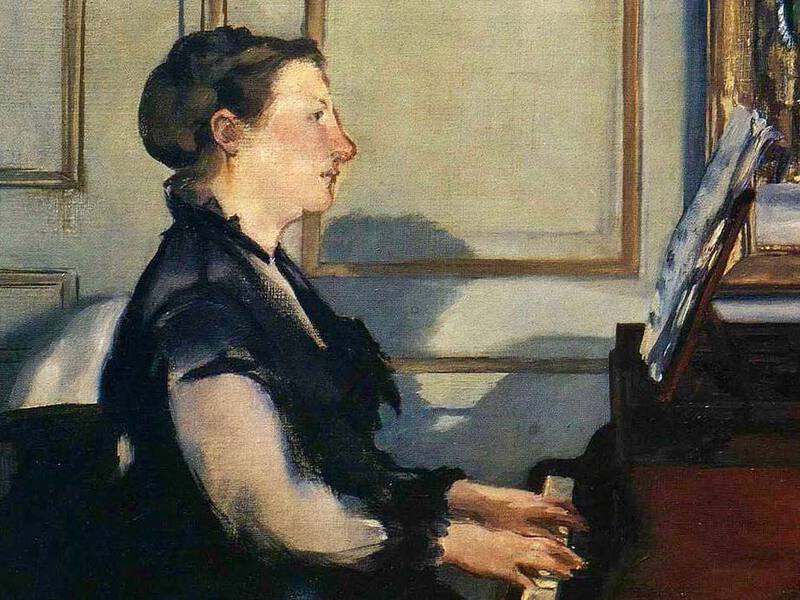
Manet tries to crack the Salon
1859: Manet submits his first work to the Paris Salon (the most important exhibition of the year, where works were assessed by a jury before being shown). His entry, The Absinthe Drinker, was rejected.
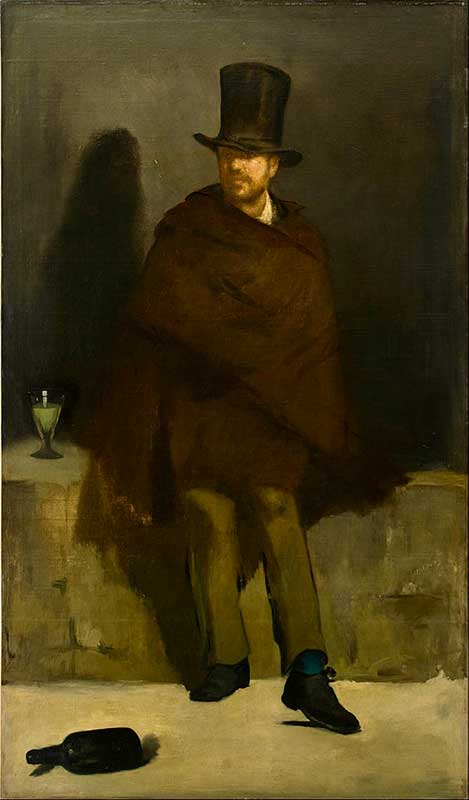
1861: Manet submits The Spanish Singer to the Salon and is accepted. His painting of a rather gormless-looking busker received an honourable mention, perhaps because Spanish subjects were popular at the time.
October 1862: Manet marries Suzanne, a year after the death of Manet's father (who was never told about Manet's relationship with Suzanne or of Leon's birth).
1863: Manet submits Dejeuner sur l'Herbe (Luncheon on the Grass) to the Salon. It was rejected, along with unprecedented numbers of other works. Sensing a political opportunity, Emperor Napoleon III decided to hold a 'Salon des Refuses' (Exhibition of the Rejected) so that the "public could decide for themselves". They mocked the work, and the critics were vicious, one saying that it had been
"painted with a mop."
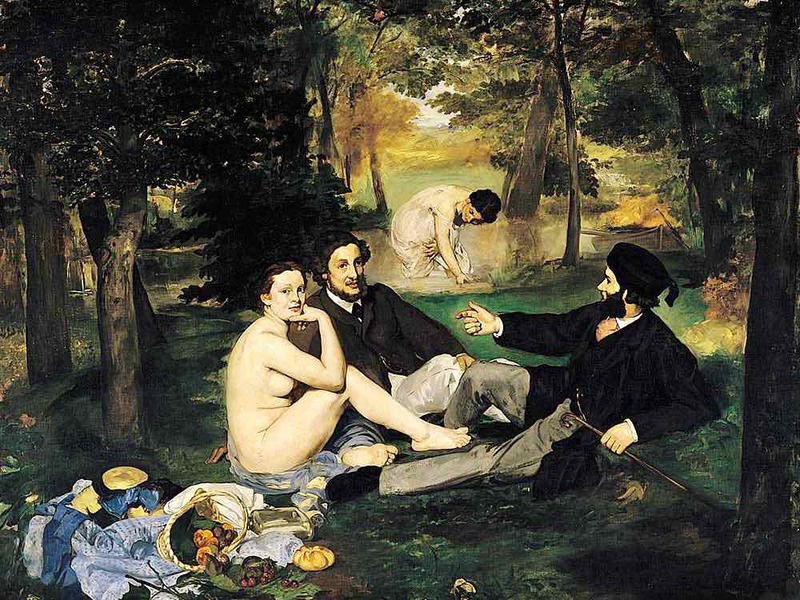
1865: Manet submits Olympia to the Salon and, remarkably, it is accepted by the jury. If the reaction to Dejeuner sur l'Herbe was bad, the reaction to Olympia was terrible. Manet complained that
"insults are beating down on me like hail."
At around this time, Manet meets fellow impressionists Claude Monet, Auguste Renoir, Paul Cezanne, Camille Pissarro and Frederic Bazille.
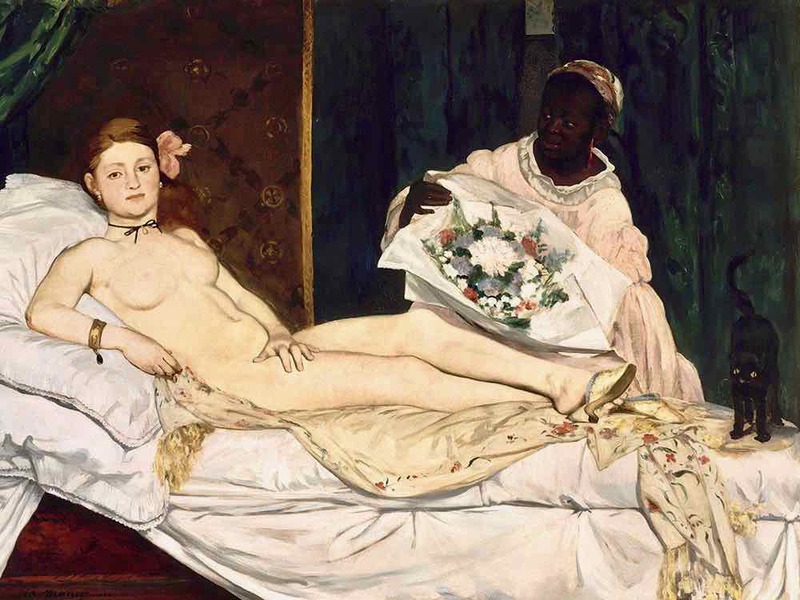
1867: Paris holds a World Exhibition and various French artists submit works to be displayed in the Fine Arts Pavilion. Manet's entries were rejected. His characteristic reaction was to build his own Pavilion, at a cost of 17,000 francs (advanced to him by his mother from his inheritance).
1867-68: Manet produces three large oil paintings depicting the execution of the French puppet ruler of Mexico, Maximilian. The painting was controversial (showing defeat of the French following a misconceived campaign) and the authorities denied Manet permission to make copies by lithograph. The largest version is now found in London's National Gallery.
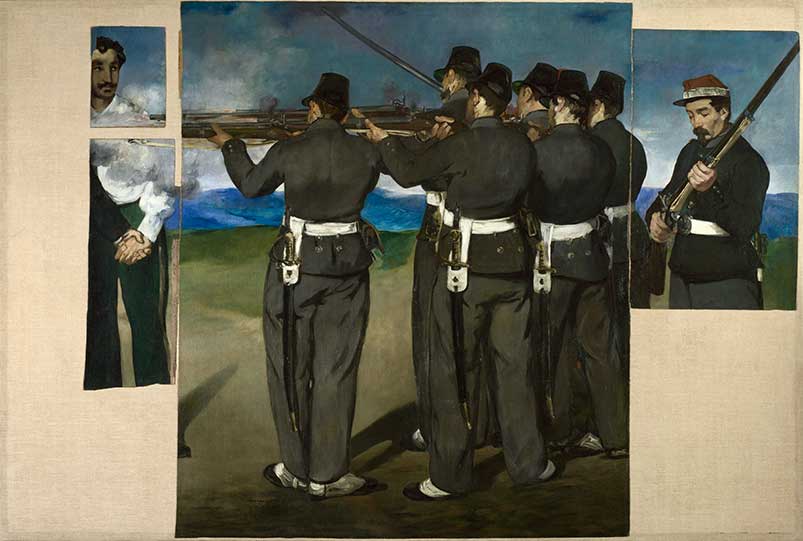
Late 1860s: Manet becomes close friends with fellow impressionist Berthe Morisot, and paints her in unusual (many would say sensual) positions. The remaining evidence (Berthe instructed her sister to destroy many letters) suggests that Manet and Morisot had an affair.
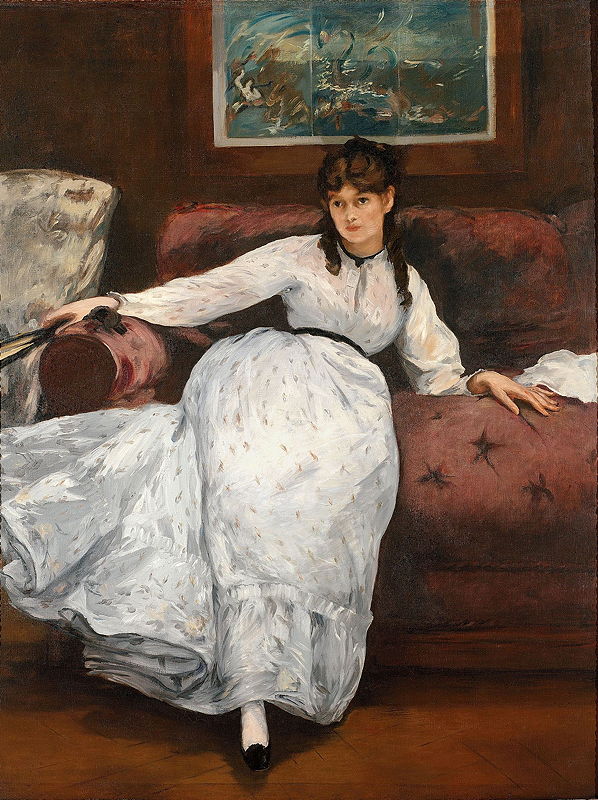
1870: Manet fought a fencing duel with Louis Duranty, an art critic friend of his who had reviewed an exhibition held at the Cercle de l’Union Artistique but barely mentioned Manet’s painting Beggar with Oysters (Philosopher) (1865-67). Manet wounded Duranty but, honour having been satisfied, the two men became friends again before long.
War and The Good Beer
Sept 1870 - Jan 1871: Manet joins up and defends Paris after it is besieged by the Prussians. Manet suffered severe hardship, but many others perished from starvation, disease or shelling. Manet went to a seaside town near Bordeaux to recuperate.
1873: Manet submitted Le Bon Bock (the Good Beer) to the salon, a portrait of a smiling working class Parisian man smoking and drinking. The work was accepted became popular overnight, with a pub even being named after it. Manet went on to sell the work for 5,000 francs.
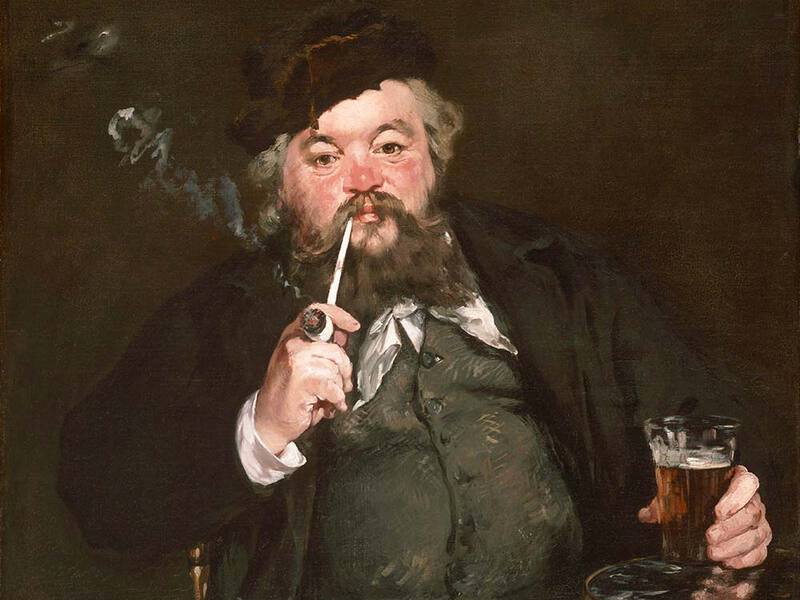
1874: Manet, who could never resist the urge to be controversial, produced a work called Masked Ball at the Opera. He was having a dig at the establishment, many of whom cavorted with prostitutes. The painting itself is a triumph of shimmering black and splashes of bright colour (check out the stockings at the top of the picture!).
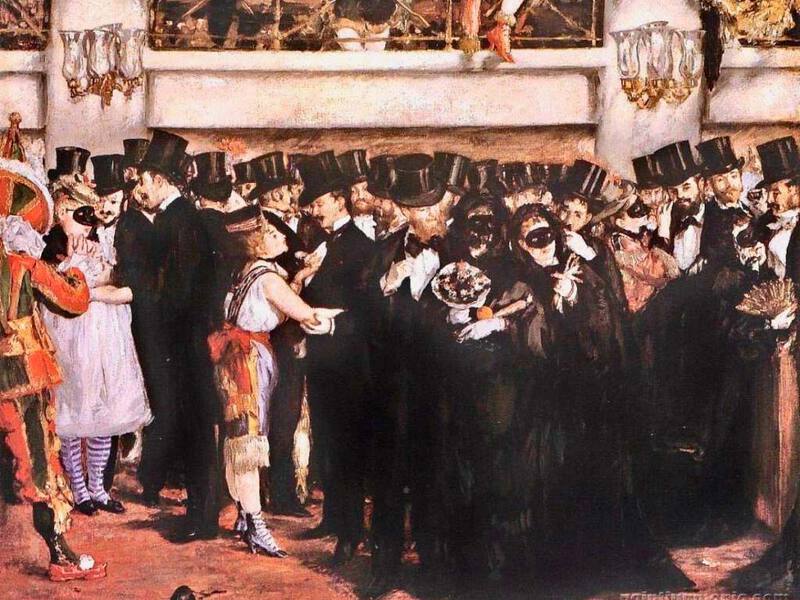
1876: Manet is again rejected by the Salon, and so decides to hold his own one-man show. The invitations say:
"Make it truthful and let them say what they like."
1877: Manet again enrages the establishment with a painting of a high-class prostitute used by the Prince of Orange called Nana. The eponymous work reminds the viewer of Olympia: this is a confident woman who is not going to apologise for her way of making a living!
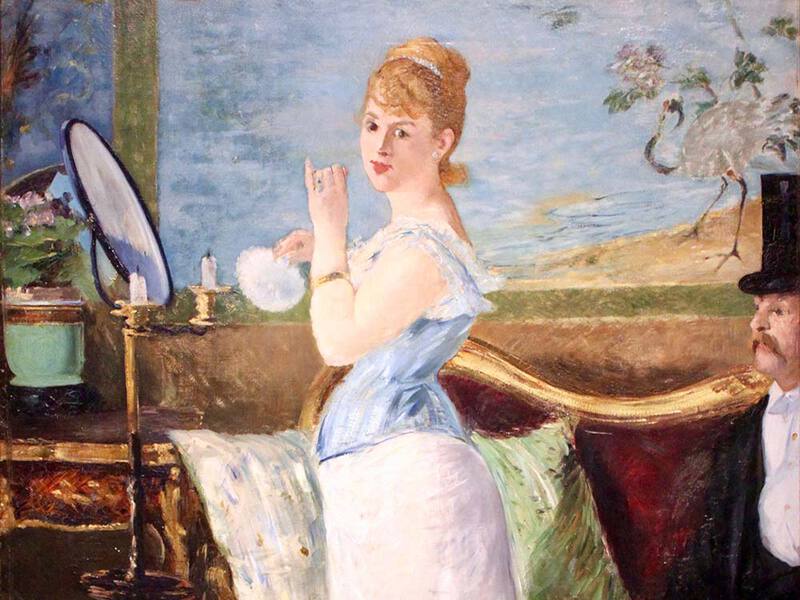
1881: Manet submits a painting of the exiled revolutionary Henri Rochefort to the Salon and is, unusually, accepted. More remarkably, he is awarded a second class medal (meaning that he will get automatic entry to subsequent Salons).
1882: Manet produces his last major work, The Bar at the Folies Bergeres. This is classic Manet: a modern and trendy subject; bright colours; and more than a little controversy (the mirror behind the barmaid disobeys the laws of physics).
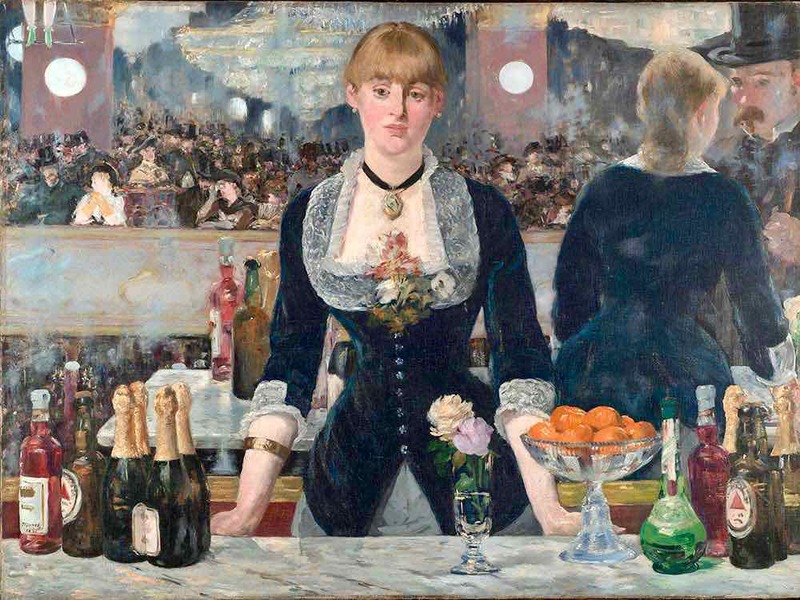
30 April 1883: Manet dies of tertiary syphilis, having undergone the amputation of his gangrenous left foot two weeks earlier. He was aged just 51. He is buried in Passy, Paris. At his funeral, Edgar Degas remarks:
"He was even greater than we thought."
1890: Claude Monet raises 20,000 by way of public subscription to purchase Olympia so that it can be donated to the French state. But the authorities refuse to hang it in The Louvre, with the painting placed in the less prestigious Musee du Luxembourg, until 1907.
2014: Manet's Le Printemps (Springtime) is sold by Christie's New York for a world-record artist price of $65.1 million.
